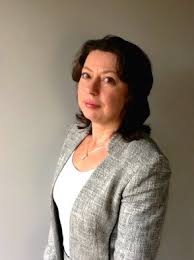

In a recent webinar, Gareth Exton, Head of Equities Execution and Quantitative Services EMEA at Liquidnet and Rebecca Healey, Managing Partner at Redlap Consulting took a look back and a look ahead on areas of regulatory focus in Europe. According to the two experts, technology will be the core focus with RTS 6, T + 1, artificial intelligence and the knowledge of algos.
Exton said “2023 has been a tough year for equities trading volumes, which are 15% lower than the average in 2022 and 9% lower than in 2021.” He described the real pain point as lit primary markets where volumes fell by nearly one third, 32%, excluding auctions. In contrast, systematic internalisers (SIs) continued to gain share and became one quarter of on-exchange volumes, up from 13%.
Since the implementation of MiFid II, regulators have been focusing on decreasing volumes of dark trading, which have nevertheless remained at between 8 to 10% of overall volumes with large-in-scale consistently remaining one third, 35%, of the market.
“The focus now appears to be on the lit continuous market and SIs,” added Exton. “This is what continues to drive the regulators at the moment including in the wholesale markets review in the UK and the MiFid II review in the European Union.”
Healey explained that regulators used to believe that restricting dark trading would shift volumes to lit markets, but this has not happened. In addition, there will be a whole stream of consultation papers next year, from both the UK and the European review of MiFid II, in order to improve liquidity in capital markets.
“The listings regime is obviously a big thing in the UK and in Europe it’s all about the Capital Markets Union, and there are a lot of interesting developments in that area,” said Healey.
For example, Christine Lagarde, President of the European Central Bank, wants ESMA, the European Union financial regulator, to have the same powers as the US Securities and Exchange Commission. ESMA would have more centralised power to push change in EU capital markets, so there are fewer differences between the national competent authorities of the member states.
“The utopia is for European and UK markets to become as large and as liquid as the US,” added Healey. “European and UK investors invest more in the US equities than they do in their home domiciles because of liquidity and their ability to trade.”
There is far more volume from retail investors in the US, and both EU and UK regulators are trying to encourage that segment of the market, which will take time. Verena Ross, chair of ESMA, has spoken of her desire to get retail investors to support the transition to the green economy, which governments are unable to fund on their own.
Healey said: “Retail and wholesale investors operate in completely different areas and their liquidity streams need to be merged in a better way.”
Investors also need to feel safe, which requires operational resiliency and the use of technology to best support the market. Healey highlighted the work within the FIX community around communication of outages and testing of algos: “There’s a really interesting element of commonality between the regulators and a much deeper engagement with market participants to solve this together.”
Consolidated tape
Another regulatory focus is a consolidated tape to bring together data for EU capital markets in one place, for both equities and fixed income. Market data is currently scattered across multiple stock exchanges and venues, making it more expensive for investors to access accurate and timely information in order to make trading decisions.
In October this year the European Council reached a provisional agreement with the European Parliament to establish EU-level ‘consolidated tapes’ or centralised data feeds for different assets to make it easier for professional and retail investors to access information including price, volume and time of transactions. However, regulators have provided few details on the construction of the tape or the revenue distribution stream.
Healey said more details for the tape is definitely on the agenda for next year and that a bond consolidated tape is preferential as regulators want to shine more light into opaque markets.
Bloomberg, MarketAxess and Tradeweb jointly announced in December that they will not form an independent company to participate in the public procurement procedure to become the fixed income consolidated tape provider in the EU or the UK due to the risk and complexity of delivering the project. They said in a statement: “For example, uncertain outcomes around product definitions and structural complexities would significantly increase the timeline and costs associated with this approach.”
T+1
European investors will also be affected by a shorter settlement cycle in the US and Canada being implemented next year. For example, there will be an impact on trades which require an FX transaction involving US dollars or that involve ETFs with US holdings.
The standard settlement cycle for most US broker-dealer transactions in securities will be reduced from two business days after a trade, T+2, to T+1 on 28 May 2024 in the US and on the previous day in Canada. T+1 is on ESMA’s focus list for next year as it will have knock-on impacts beyond settlement on areas such as stock lending and across the trade lifecycle. A shorter settlement cycle requires investment in technology to make processes more efficient and ESMA have also discussed technology investment in the post-trade space.
“There is the assumption that we are all going to follow suit,” said Healey. “The asset management community is global and wants standardised settlement.”









